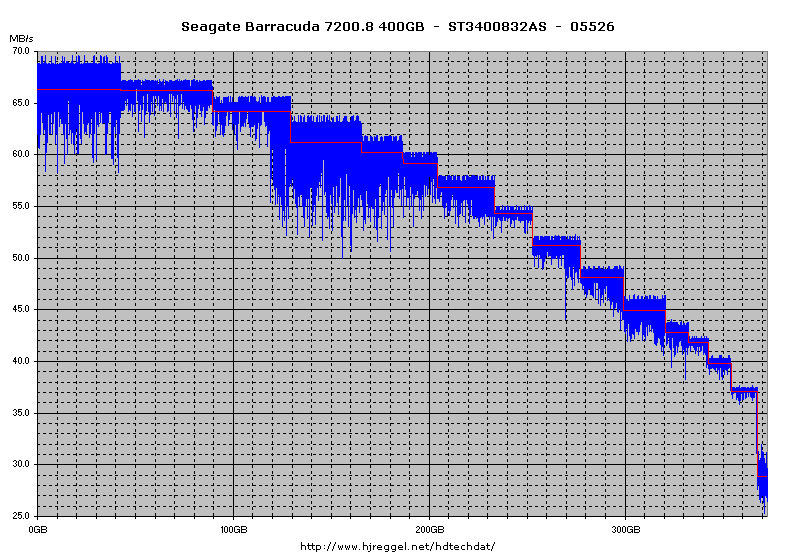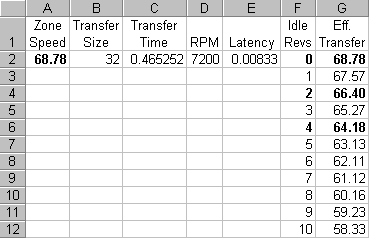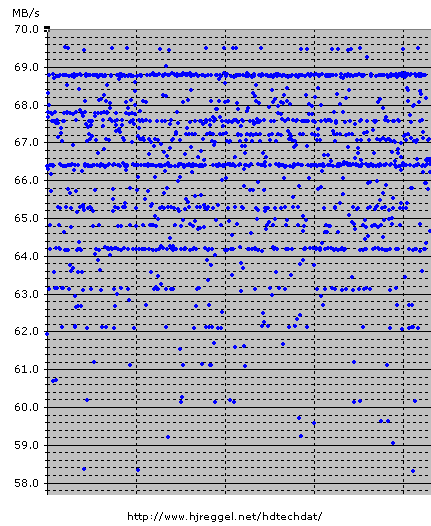Hi,
This is a complicated issue, so take your time.
I bought the Seagate Barracuda 7200.8 400GB S-ATA because it was listed as one of the fastest large disks in a way overrated local computer magazine. I was not able to get a clean zone diagram with any of my S-ATA host controllers (SiI 3112, SiI 3114R, ICH6R Southbridge) or the S-ATA to ATA/133 bridge (Marvell 88SA8040-TBC). Now Toms Hardware shows the same bad diagram for this disk. Here's mine:

I was wondering what could be going on an did some math: My test program took samples of 32MB, so I calculated the effective transfer rate if the disk would miss some head or track switches, and has to wait a certain number of full revolutions during the measurement.

I also got the idea to use dots instead of a line in the diagram. Guess what: Most dots appear on certain "quantum levels" which are exactly the effective transfer rate with a certain count of idle revolutions.

It looks like the head skew and/or track skew is too short, so that the disk sometimes misses the first sector of the next track and has to wait one full revolution for the data. The 32MB transfers take about 56 revolutions, and the worst rate equals 10 idle revolutions.
Hans-Jürgen
This is a complicated issue, so take your time.
I bought the Seagate Barracuda 7200.8 400GB S-ATA because it was listed as one of the fastest large disks in a way overrated local computer magazine. I was not able to get a clean zone diagram with any of my S-ATA host controllers (SiI 3112, SiI 3114R, ICH6R Southbridge) or the S-ATA to ATA/133 bridge (Marvell 88SA8040-TBC). Now Toms Hardware shows the same bad diagram for this disk. Here's mine:

I was wondering what could be going on an did some math: My test program took samples of 32MB, so I calculated the effective transfer rate if the disk would miss some head or track switches, and has to wait a certain number of full revolutions during the measurement.

I also got the idea to use dots instead of a line in the diagram. Guess what: Most dots appear on certain "quantum levels" which are exactly the effective transfer rate with a certain count of idle revolutions.

It looks like the head skew and/or track skew is too short, so that the disk sometimes misses the first sector of the next track and has to wait one full revolution for the data. The 32MB transfers take about 56 revolutions, and the worst rate equals 10 idle revolutions.
Hans-Jürgen
![[H]ard|Forum](/styles/hardforum/xenforo/logo_dark.png)